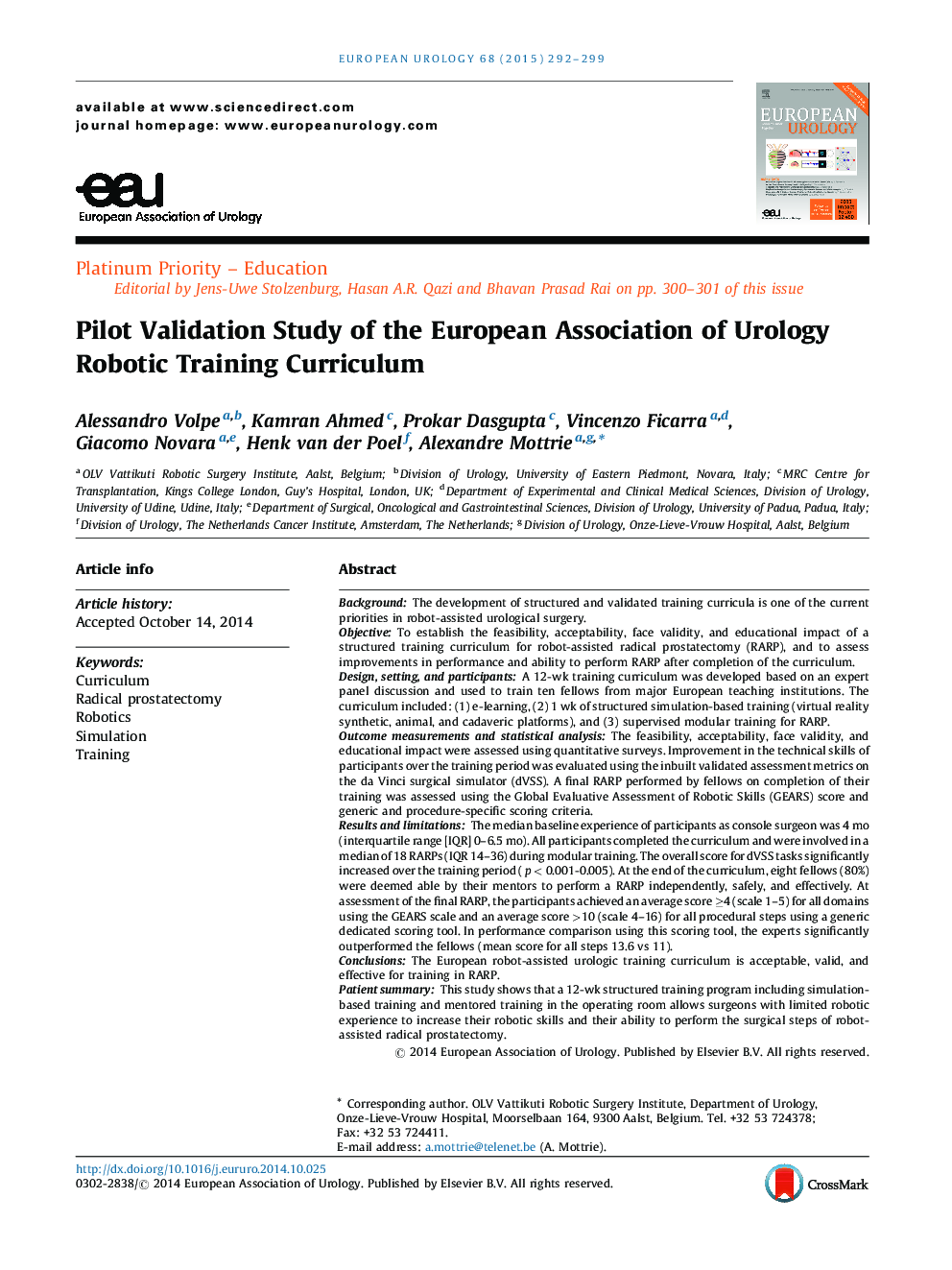| Article ID | Journal | Published Year | Pages | File Type |
|---|---|---|---|---|
| 6176488 | European Urology | 2015 | 8 Pages |
BackgroundThe development of structured and validated training curricula is one of the current priorities in robot-assisted urological surgery.ObjectiveTo establish the feasibility, acceptability, face validity, and educational impact of a structured training curriculum for robot-assisted radical prostatectomy (RARP), and to assess improvements in performance and ability to perform RARP after completion of the curriculum.Design, setting, and participantsA 12-wk training curriculum was developed based on an expert panel discussion and used to train ten fellows from major European teaching institutions. The curriculum included: (1) e-learning, (2) 1 wk of structured simulation-based training (virtual reality synthetic, animal, and cadaveric platforms), and (3) supervised modular training for RARP.Outcome measurements and statistical analysisThe feasibility, acceptability, face validity, and educational impact were assessed using quantitative surveys. Improvement in the technical skills of participants over the training period was evaluated using the inbuilt validated assessment metrics on the da Vinci surgical simulator (dVSS). A final RARP performed by fellows on completion of their training was assessed using the Global Evaluative Assessment of Robotic Skills (GEARS) score and generic and procedure-specific scoring criteria.Results and limitationsThe median baseline experience of participants as console surgeon was 4 mo (interquartile range [IQR] 0-6.5 mo). All participants completed the curriculum and were involved in a median of 18 RARPs (IQR 14-36) during modular training. The overall score for dVSS tasks significantly increased over the training period (p < 0.001-0.005). At the end of the curriculum, eight fellows (80%) were deemed able by their mentors to perform a RARP independently, safely, and effectively. At assessment of the final RARP, the participants achieved an average score â¥4 (scale 1-5) for all domains using the GEARS scale and an average score >10 (scale 4-16) for all procedural steps using a generic dedicated scoring tool. In performance comparison using this scoring tool, the experts significantly outperformed the fellows (mean score for all steps 13.6 vs 11).ConclusionsThe European robot-assisted urologic training curriculum is acceptable, valid, and effective for training in RARP.Patient summaryThis study shows that a 12-wk structured training program including simulation-based training and mentored training in the operating room allows surgeons with limited robotic experience to increase their robotic skills and their ability to perform the surgical steps of robot-assisted radical prostatectomy.
